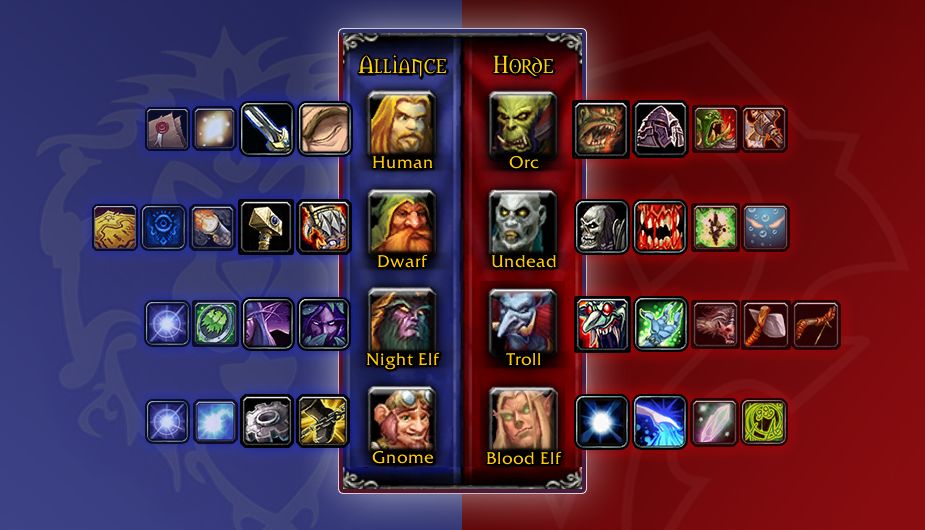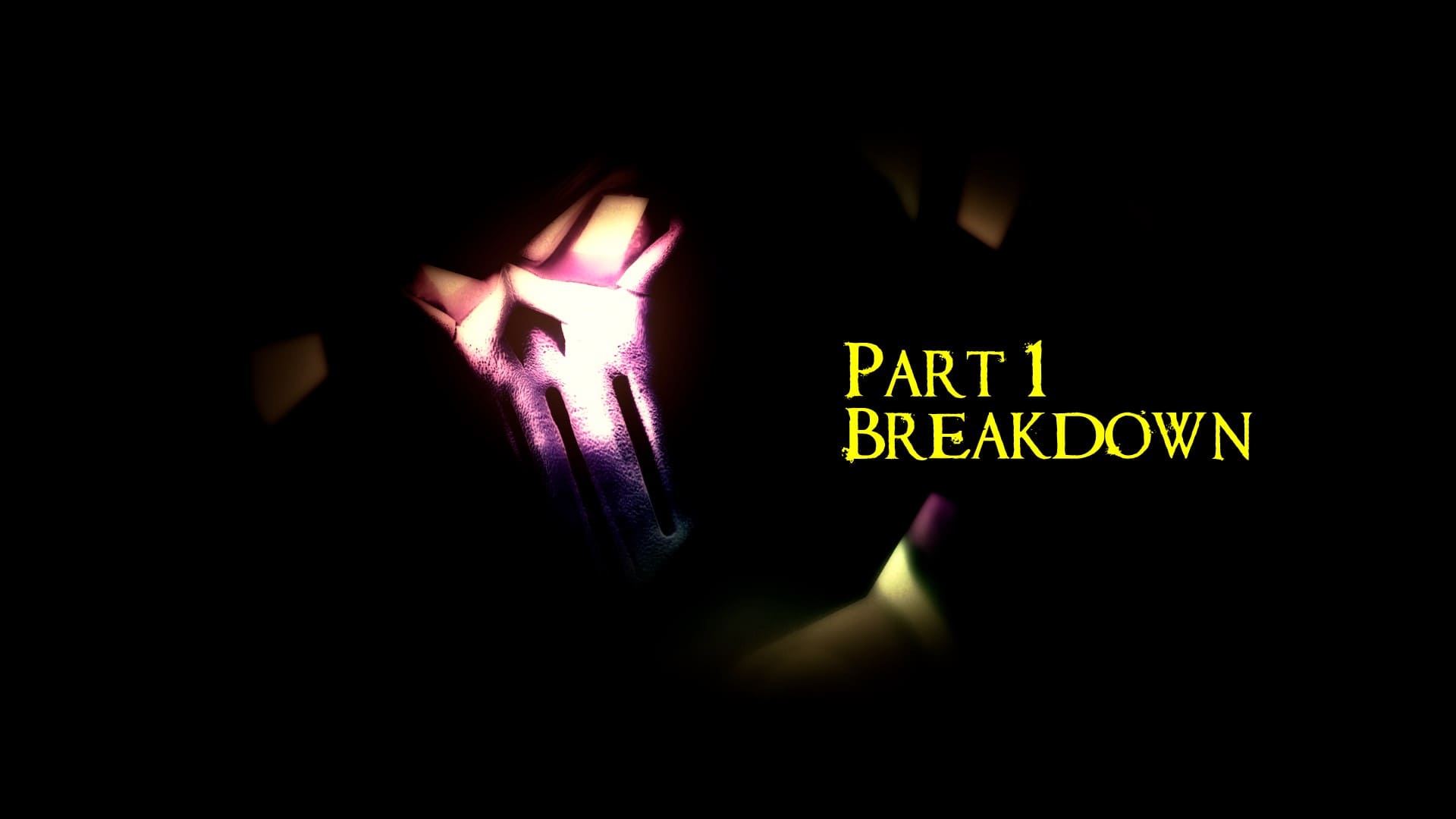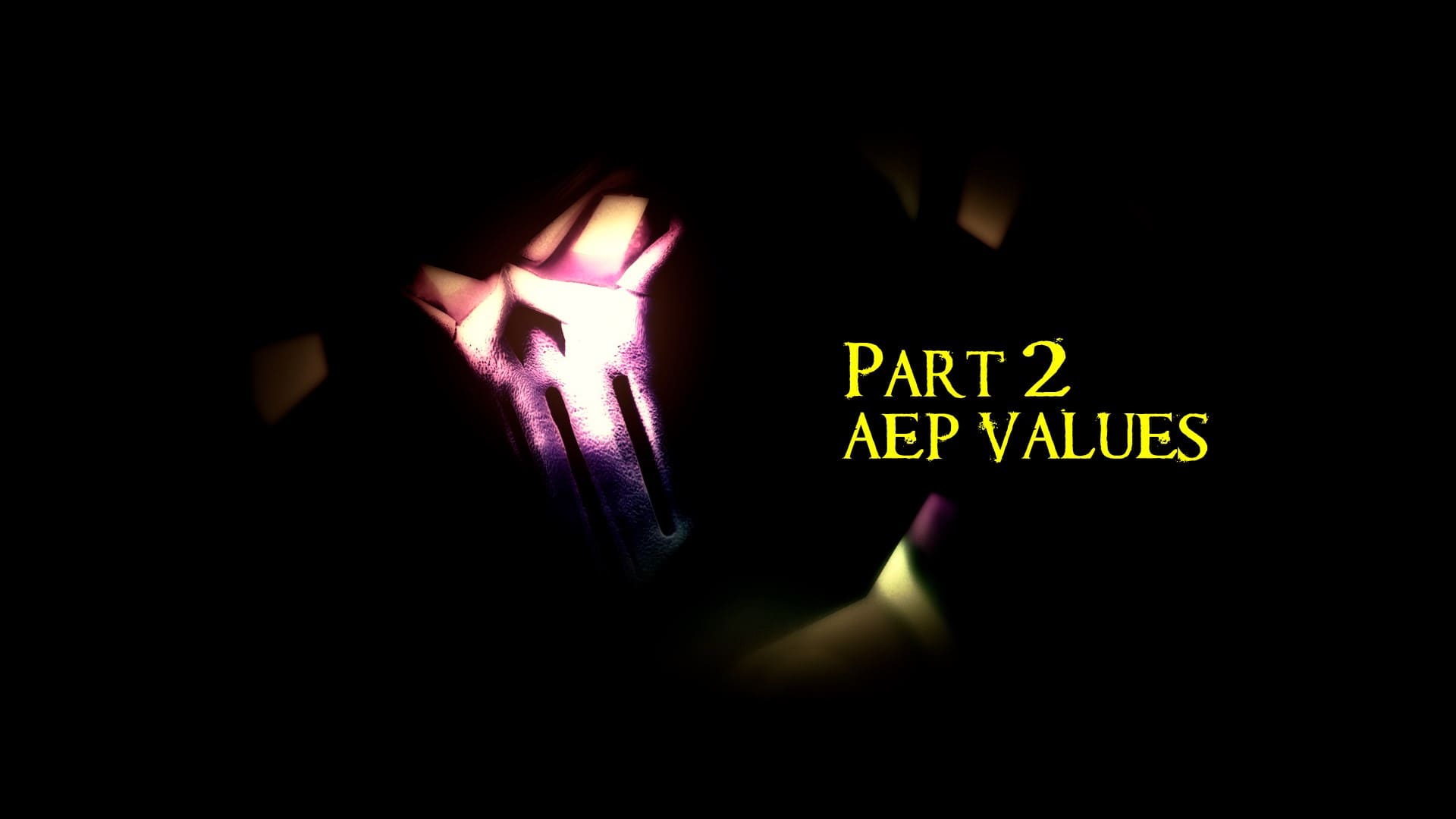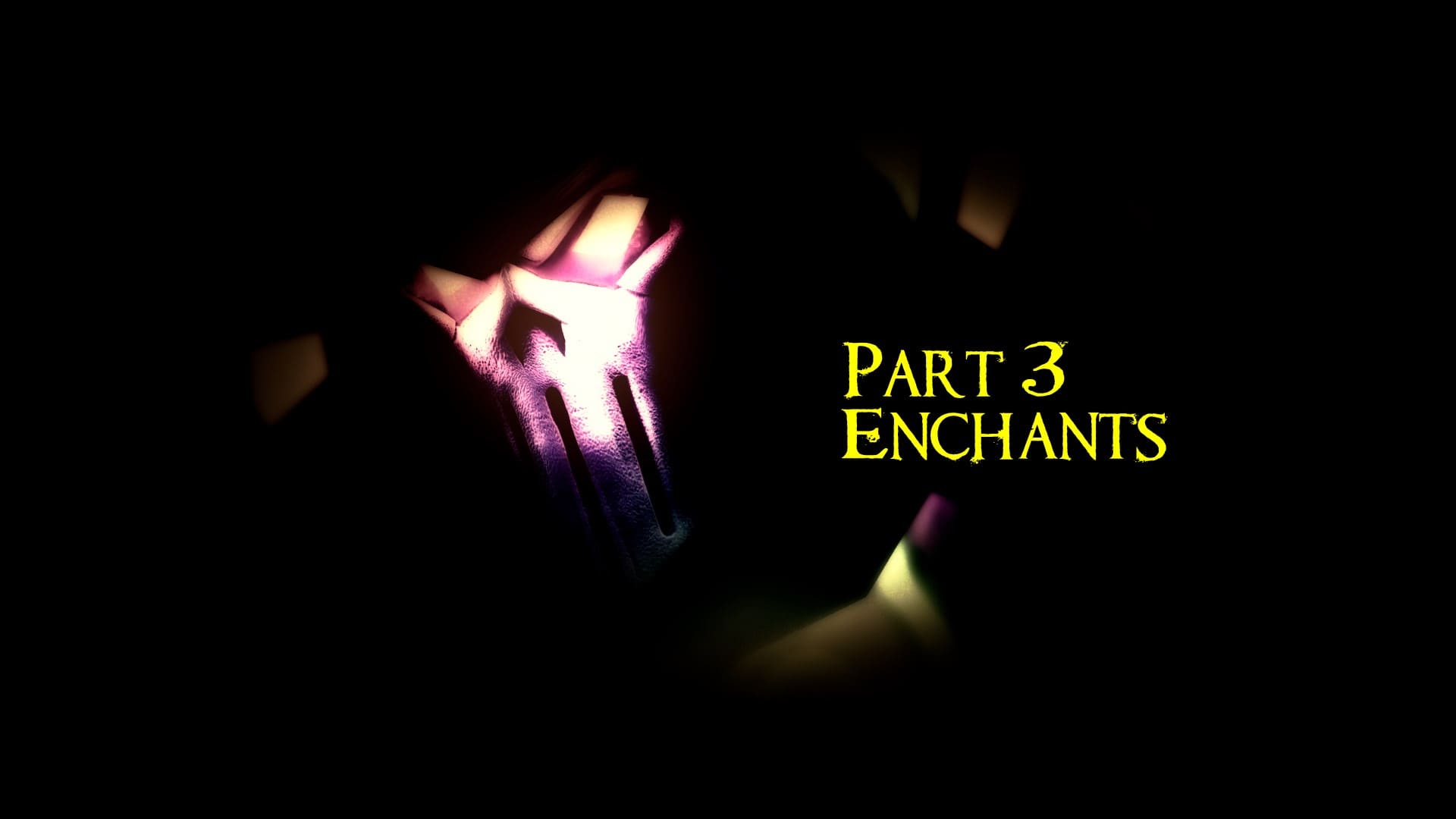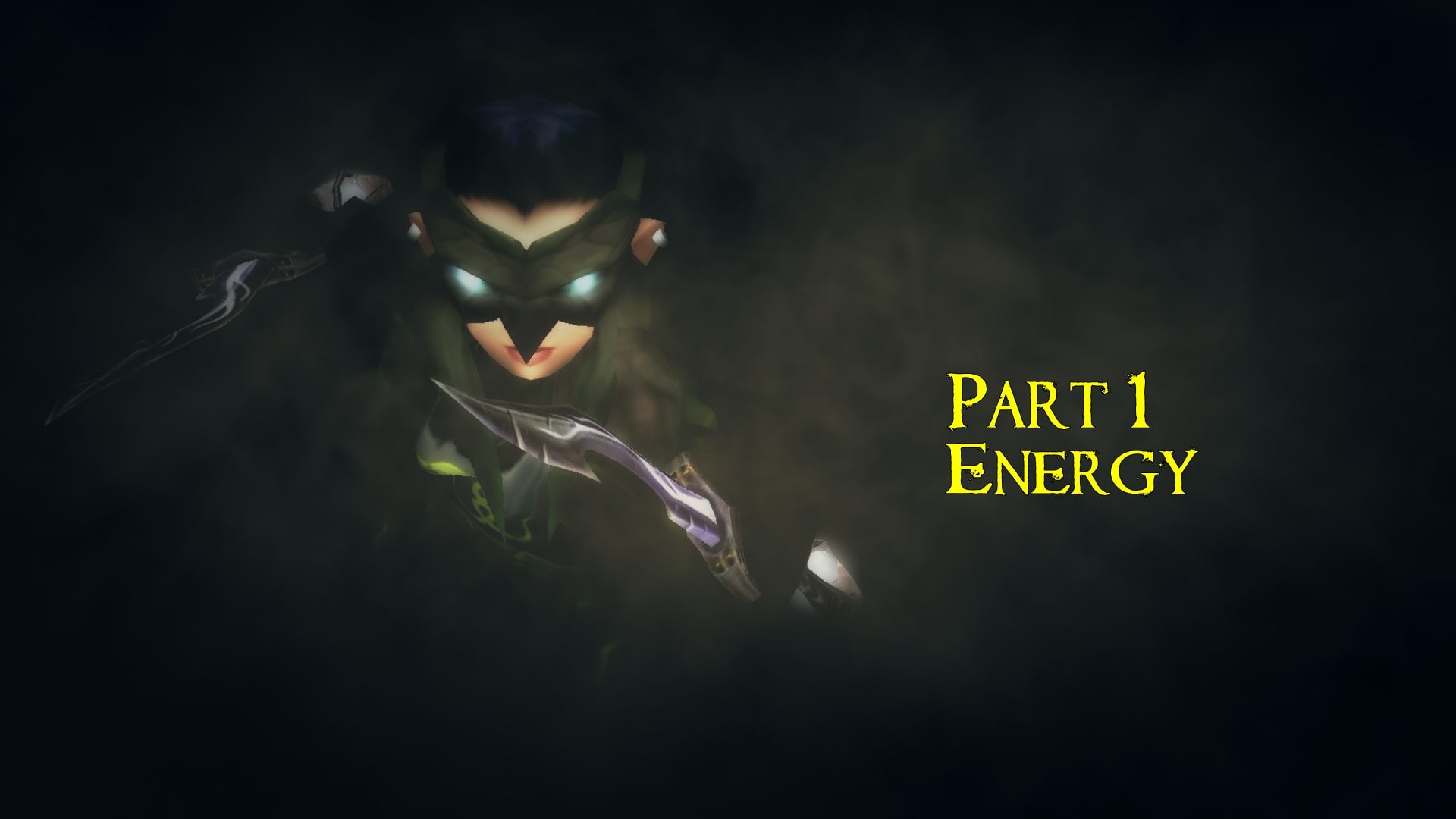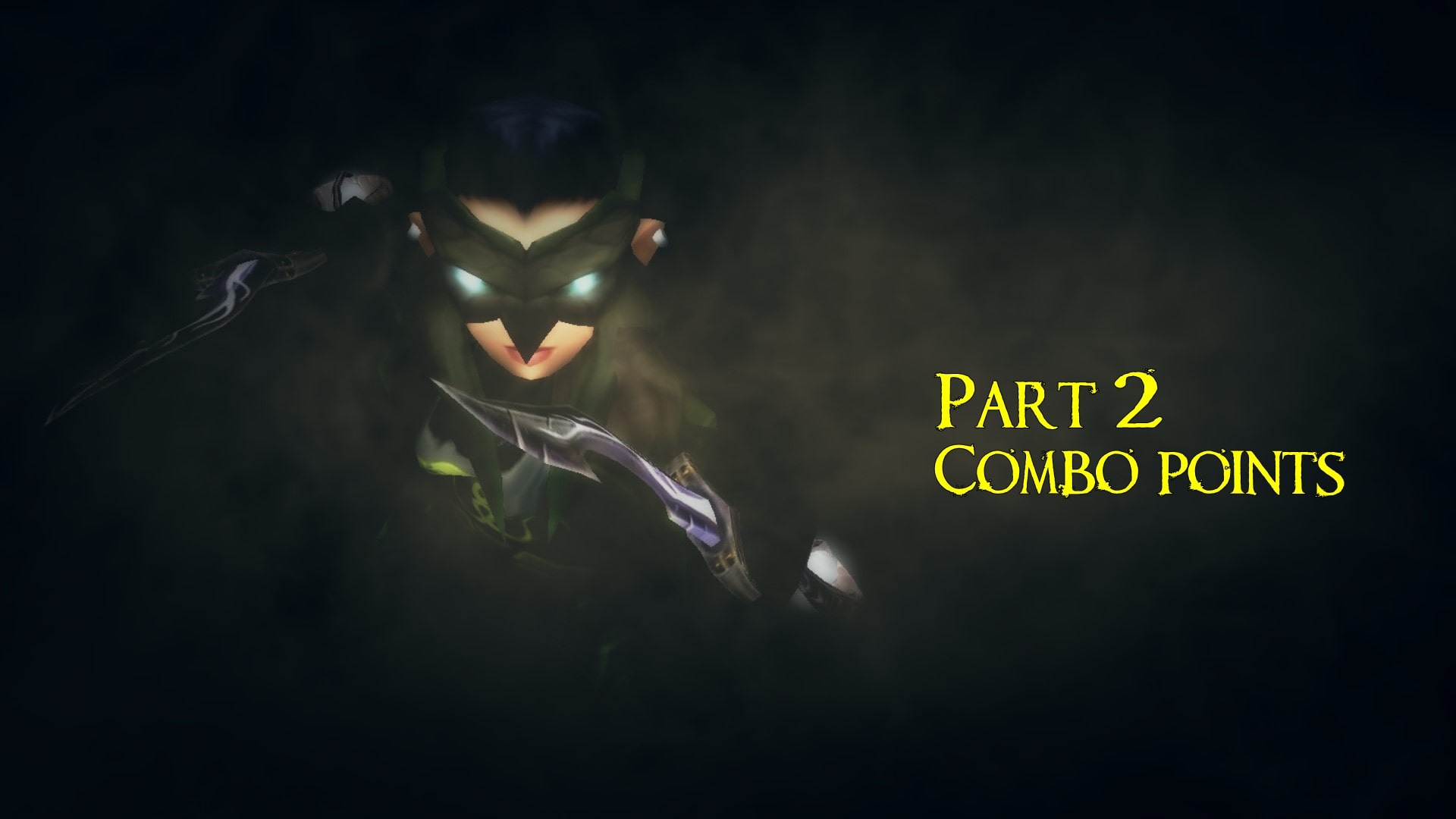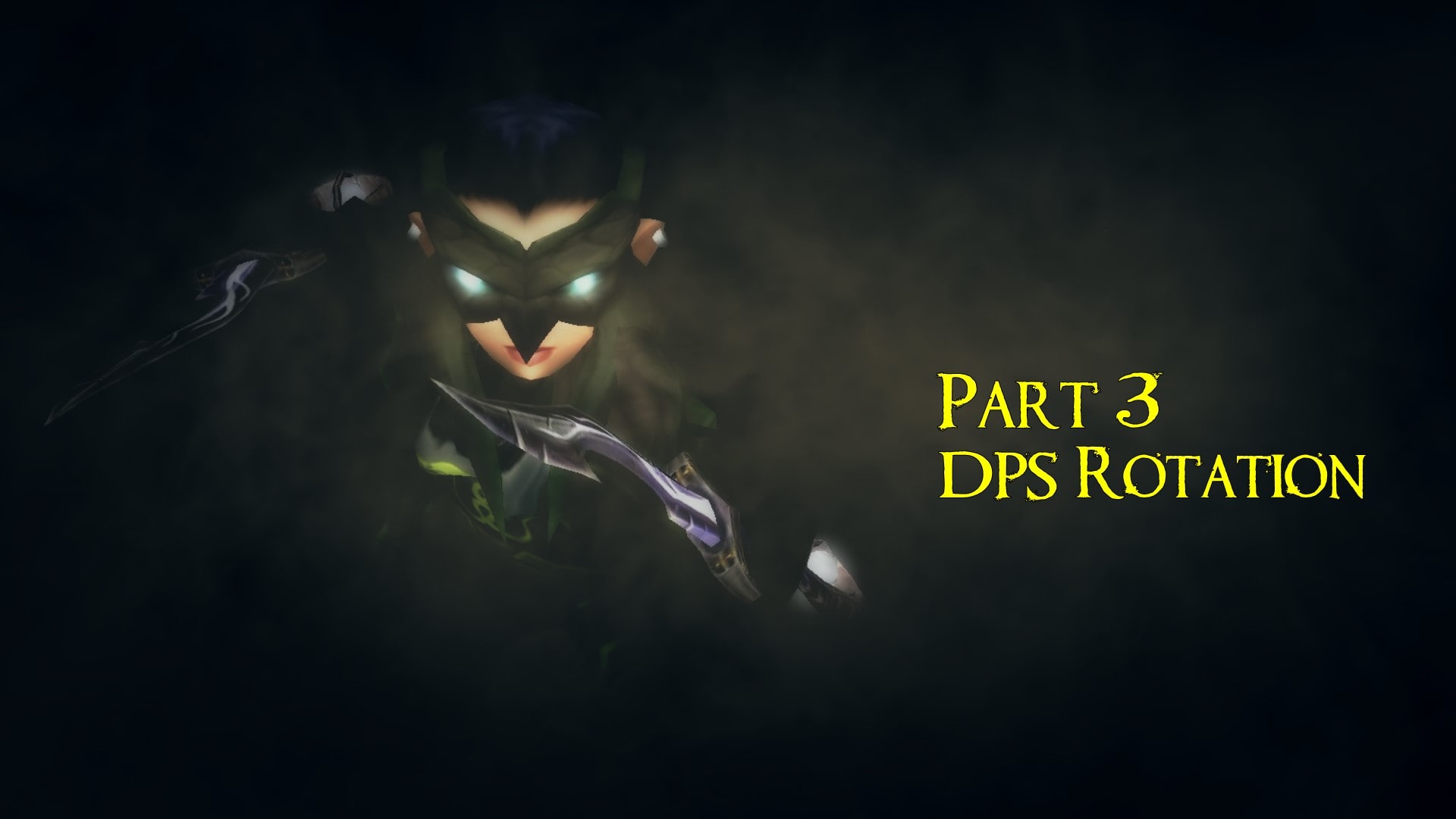Welcome, fellow rogue brother. If you’re new to the Classic Burning Crusade, or to the rogue class, we’ve tried to pack up everything here to give you a global vision of our beloved class on TBC.
There are multiple topics covered here with links to get more in-depth information if you want to dive deeper.
RACES
On TBC Classic, the base stats for each race does not really matter so we usually focus on the racial traits and specializations. Then it also depends on whether you look for raiding, or competing in arenas, or a mix of both.
ALLIANCE
Generally speaking, the best race to pick as a rogue in Alliance is Human, for three reasons:
– Perception, which is in PvP, is extremely interesting and game-changing.
– Expertise with swords (and maces), which is really a must-have when raiding as a rogue.
– Diplomacy, which allows you to farm your reputations faster than other races.
HORDE
For the horde, the choices are more about your in-game preferences.
If you look for competing in arenas, Undead
This the king race of PVP rogues, and even considered better than Humans, because their main racial (Will of The Forsaken) is more reliable. In addition, Cannibalize is also extremely useful especially for 1v1 situations in arenas.
If you want to be a raider rogue, then you must pick either Orc or Troll because they both bring a solid talent to the table for PVE. Orc Blood Fury is better early on, but Troll Berserking will out-scale it later in the expansion. Being orc allows you to have a nice PVP advantage too with the Hardiness and Blood Fury which is similar to a second AP trinket.
To sum it up:
– Alliance: Human
– Horde: Undead (PVP), Troll (PVE), and Undead or Orc (PVP+PVE)
If you want to explore a bit more options and discover the strengths of the other races, we highly advise you to check our Rogue races guide.
Best rogue race on BC Classic
SPECIALIZATION
PVE
On the Burning Crusade, playing a rogue in raids requires you to be using the Combat/swords specialization, usually with Improved Expose Armor unless you have another rogue to do that.
We wrote a complete guide about Combat specs to help you to understand how it works.
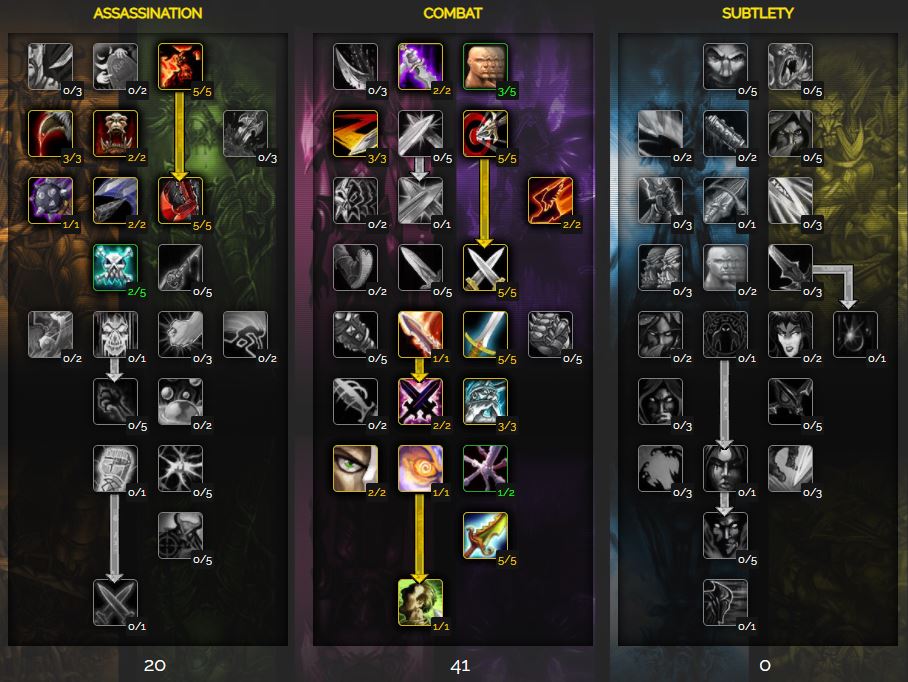
Combat daggers are worse than swords, and Mutilate is even worse than that. Rogues already struggle so you should not take a weak talent specialization.
PVP
For PVP, the king specialization is the popular Subtlety template with Hemorrhage and Shadowstep. It brings a lot of mobility, but also free combo procs, energy procs, and more resist chances for your poison to be abolished, which is one of the priorities of your opponents. Make sure to read the guide written by Sbkzor to get all the information about this specialization.
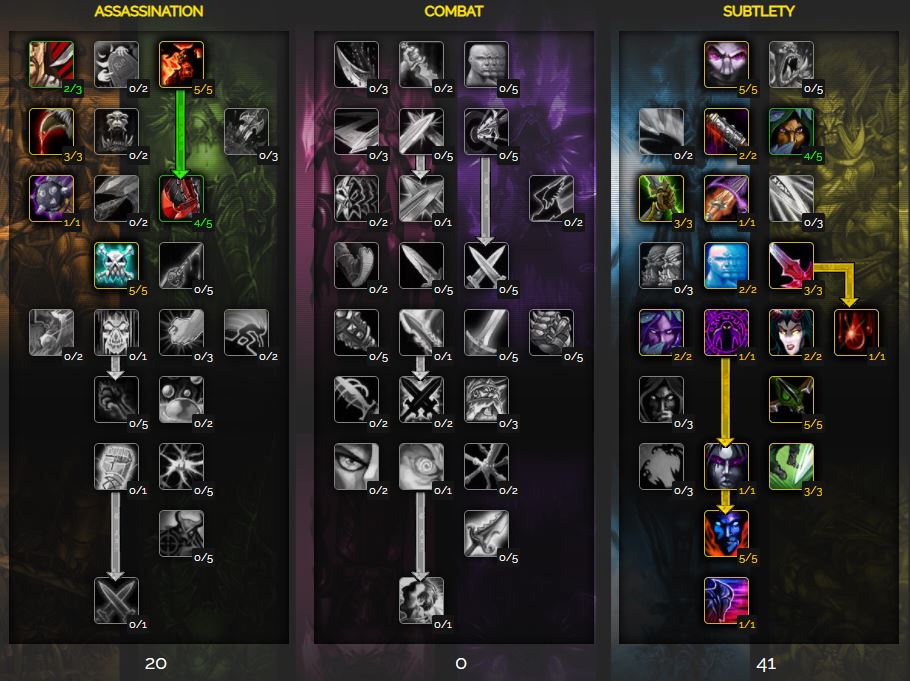
There are several variations for this spec, according to your personal preference (Imp Evisc vs. Murder talents) or your team composition (2/2 Imp expose vs 4/5 Lethality).
You can also try two other specs (Combat, aka HArP, and Assassination, aka Mutilate), but in an arena perspective, they’re both less viable.
PROFESSIONS
On the Burning Crusade Classic, every profession has something interesting to offer, but here’s the general recommendation.
PvP Players:
Engineering / Jewelcrafting or Enchant
We’d generally recommend a PVP rogue to be an engineer for the goggles (Phase 2/Tier 5) and eventually the belt (during P1). The second crafting profession would be either Jewelcrafting for the Panther and endgame BIS neck or enchanting for your rings.
PvE Players:
Leatherworking / Engineering or Enchant
Leatherworking always was considered a mandatory profession due to the importance of Drums in the Burning Crusade meta. The second profession would be up to your own preferences. Goggles from engineering are a solid piece for a PVE set, as well as the Battle Chicken or even Goblin Super Sapper Charges.
Quick note for Phase 1 :
Blacksmithing for Dragonmaw is a solid option because it allows you to get one of the best weapons early on. But you have multiple good options to pick as the main hand, so you’d probably opt for changing your profession even before the end of phase 1.
If you want to explore a bit more your options and discover the strengths that other professions can bring to the table, we highly advise you to check our rogue professions page.
REPUTATIONS
Once you hit level 70 you will be looking toward reputations as they play a big role in TBC for early gearing, dungeon & raid attunements and professions recipe.
The two essential reputations for both PVE and PVP are:
– Aldor – Exalted (shoulders enchantment and a great sword for early phase 1)
– Cenarian Expedition Revered (Glyph – Head enchant)
But as a PVE player, you will also need access to Heroic Dungeon linked to Honor Hold/Thrallmar, Lower City, and Sha’tar to complete your attunement to later raid tier.
There is definitely a lot more to say about reputation, and we’ll provide more in-depth guides later on.
For now, do not miss our article in Rogue Life to get more inputs about the Aldor/Scryers reputation.
STAT PRIORITIES
The first thing to know before talking about gearing is what stats you need to become more efficient.
For a rogue, before any talents, it is as follow:
14 attack power = 1 DPS on your main-hand, 0.5 DPS on your off-hand and abilities’ damage
1 Strength = 1 Attack Power
40 agility is 40 AP + 1% crit + 2% dodge + 80 armor
22,1 critical strike rating = 1% critical chance
15,8 hit rating = 1% hit chance
16 expertise rating = 4 expertise score = 1% less dodge/parry chances
15,77 haste rating = 1% haste
ArP ignores the opponent’s armor and gets better when you get more and against low armor targets.
1 stamina = 10 health
39,4 resilience give you :
-1% crit chance / -1% Dot damage
-2% crit damage / -2% mana drain
And the stats priority are:
– PVE: Hit until ability cap (9%) > Expertise > Hit until basic attack cap (28%) > Agility > Haste > Crit > AP
– PVP: Hit until ability cap (5%) > Agility = AP > Crit > Haste
Note that stats priorities are the direct comparison of 1 stat points to 1 stat points, but rogue’s DPS is a complex interaction between all those stats and this also does not take into account the availability of certain stats early on: Expertise, Haste and ArP wich can’t be directly compared since it depends heavily on target’s armor.
This stat priority list doesn’t take into account defensive stats like resilience, dodges chances and stamina which have a very important role in Battleground and Arena.
For more understanding about stats weight, stats priority, and how to compare a piece of gear you can go to our Stats & optimisation guide series.
Last but not least, for both PVE Combat Sword and PVP Subtlety you need a slow main hand (our main abilities scale with weapon damage !) and the faster offhand possible (to quickly apply poison, have a shiv that cost the minimum energy in PVP and a maximum of Combat Potency and Sword proc in PVE).
GEAR
On The Burning Crusade, there are many sources of gearing from leveling to raid and arena, passing by normal & heroic dungeon, reputations, battlegrounds, badges of justice, and professions.
And even if you haven’t played WoW Classic (Vanilla) you will catch up quite quickly as none of the Vanilla gear is BIS for Phase 1 PVE or PVP so no worries!
Leveling gear
For a PVE player, it is straightforward, you should probably grind dungeons as much as possible to get your reputations up and stepping outside to pick up some amazing pieces you can find in our early gearing guide.
If you plan to only do PVP, you will focus on getting pieces with agility, attack power, hit rating, and a maximum of stamina during your leveling to be able to hit the battleground as early as possible… But you also need to pick up more PvE-oriented pieces and working on your reputation as you will at least need to do some heroic dungeon!
What should you do when hitting level 70?
1) Finish your Karazhan attunement
2) Work on your Aldor reputation asap to get a great early game sword & shoulder enchant
3) Get revered with the Cenarian expedition for your head enchant
Then,
For PVE Player:
4) Get in Karazhan as early as possible!
5) Farming heroics to get Choker of Vile Intent and Bloodlust brooch from badges of justices, and while doing so pick up Wasterwalker gloves (shattered halls), shoulder (Auchenaï Crypt), Girdle of the Deathdealer, Latro’s Shifting sword & Hourglass of the Unraveller (Black Morass) and Nightfall Wristguards (Old Hilsbrad).
6) Even if you don’t like PVP, get some arena point so you can get one of the best main hand guaranteed, you don’t know if you will be unlucky with drops !
For PVP player:
4) Hit the battleground and focus first on getting your PVP trinket and also gloves/shoulder pads from the blue set as it will give you some resilience and a very useful ranged interrupt on your deadly throw. Then you can work on your epic off-set pieces.
5) Start getting arena points: you should work towards your main hand first (if you do not have yet one of the top 5 weapons from phase 1) and then your Arena set.
6) You absolutely need to get Bloodlust Brooch from badges of justices, this is the best PVP trinket until phase 4! And since you need to grind heroic you should grind some with a good drop (we advise you Black morass, Slaves pens & Auchenaï Crypt). A good alternative comes with Jewelcrafting (Panther and its upgrade in later phase: Panther).
7) Even if you only want to PVP you should still go to Karazhan, it will allow you to get some nice gear while working on Arena & Battlegrounds, but even so, this is where you will get your cloak, rings and why not an amazing pair of boots. (if you are not raiding past Karazhan you will keep the rings and boots until at least the next phase and the cloak until phase 5 !).
For plenty more information about gear:
– Phase 1
– Phase 2
Phase 2 / 3 / 4 / 5 links to come soon
ESSENTIAL TIPS
RAID
As a raiding rogue, your role is to do whatever you can to maximize raid damage output. Usually, that is by increasing your own damage output, but sometimes it is helping others deal more damage by applying Expose Armor. You should come prepared with all the consumables you need to maximize your damage output and in an appropriate raiding talent specialization.
A good rogue is always moving to the next target and upfront with the tanks. Good movement means you spend more time attacking mobs and dealing damage. It cannot be understated how important good movement is, and many people underestimate the impact good movement has on your overall damage output.
Once you are attacking a mob, you want to maintain Slice and Dice and depending on the circumstances, Expose Armor as well. For simplicity, we can say use Expose Armor on bosses and skip it on trash. When you do use Expose Armor, it is your top priority to make sure the debuff never falls off until the boss is dead. If you can manage to do more than Slice and Dice and Expose Armor, the next best is to get in a few casts of Rupture – but don’t compromise your top two!
PVP
As a new PvP rogue player, there are three things to know to properly enjoy your experience in arenas and battlegrounds :
- Good poisons and off-hand swapping management are extremely important. For this reason, you may end up using Shiv quite a lot in order to make sure your poisons are applied to your opponent. If you want to know more about this topic, we highly recommend reading this guide.
- Cloak of Shadows and Shadowstep are your most important cooldowns. They need to be used wisely to make sure your enemy won’t make any benefit from them. Do not cloak too early.
- Your main source of damage, after auto-attacks, is Hemorrhage. Backstab is not a reliable ability to use to DPS in TBC PVP, in comparison, so you can unbind it and build combos and pressure with Hemo and Shivs.
BEST ARENA TEAM COMPOSITION
Rogue is one of the most popular classes of the TBC arena scene. It has everything to deal with all types of situations. It pairs extremely well with most of the other classes because it brings a lot of controls and a solid damage output.
Naturally, the most “debutant” friendly way to get started with playing in an arena is probably to play with a healer teammate in 2v2. It allows a lot more mistakes to happen compared to double DPS because you can rely on healing to recover from your errors. This being said, playing double DPS is extremely great to learn quickly how to synergize with another class, by studying both class strengths and looking at how to make them work against other team compositions.
Below we listed the team composition that we advise you to play as a newcomer in arenas as a rogue on TBC. They’re the most viable ones, which means that you’re likely to be faced with a lot of them too.
2V2 bracket
Healer/rogue
These two team compositions are consistently good through the whole expansion
– DiscPriest/Rogue
– Rdruid/Rogue
Double DPS
During P1 a lot of double DPS are strong, but later on, some team compositions tend to become less viable, or significantly harder. We picked the most reliable ones through the whole expansion.
– Rogue/Mage
– Rogue/Spriest
– Rogue/Warlock
To get more information on these team compositions, make sure to read our article that brings you a solid comparison between double DPS and Healer/rogue teams.
3V3 bracket
In 3v3, rogue also is extremely popular for similar reasons than in the 2v2 bracket. It brings solid controls, great damages, and a healing reduction which makes it very in-demand (alongside warriors) in 3v3.
There are infinite team compositions to play in 3v3, including triple DPS, but we have 3 solid ones to recommend. These comps are built with the same scheme: rogue/caster/healer.
– Rogue / Mage / Disc Priest
– Rogue / Lock / Druid or Disc Priest
– Rogue / Lock / Disc Priest
And that’s it. You know the basics of the Classic TBC rogue. The rest is something that you’ll build by practicing the class, be it in raids, or arenas and battlegrounds. At Silent Shadows, we believe that rogue is one of the most beautiful class to be played on TBC, and we hope that you will enjoy your experience with it as well.
If you’re looking for information that is not listed here, make sure to join us on Discord. The server is really active and members are looking for helping each other to improve their knowledge.


